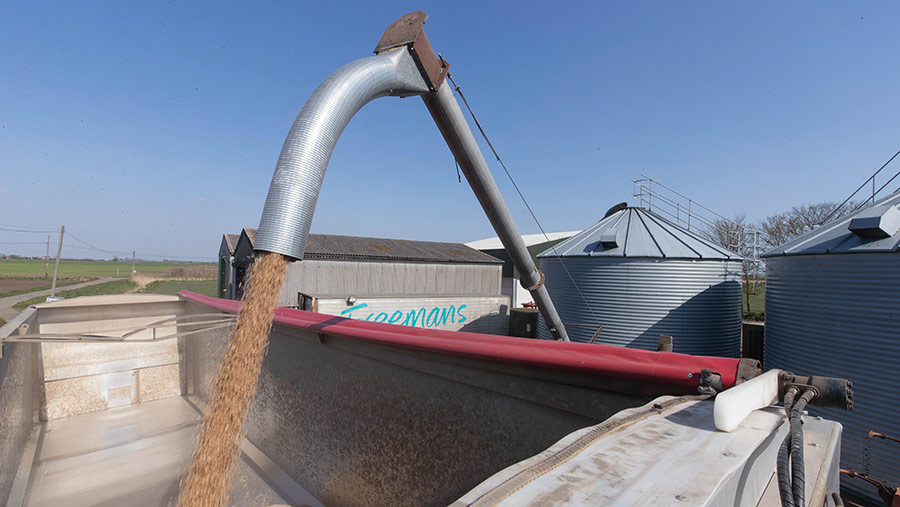Mixed signals for grain markets with feed wheat at £180/t
 © Tim Scrivener
© Tim Scrivener Poor plantings in the UK and EU due to the exceptionally wet autumn and winter are supporting grain prices, but limited demand has kept UK ex-farm feed wheat prices at about £180/t.
Spot prices for UK feed wheat collected on 3 January had a notable regional variance and ranged from £166/t in Kent to £192/t in Northumberland.
Meanwhile, milling wheat held a £68/t premium over feed wheat to average £248.5/t.
See also: Tight margins for arable farmers here to stay, says Rabobank
UK wheat markets followed wider global trends over the Christmas period and have a fairly neutral outlook in the short term.
Chicago wheat futures climbed at the end of 2023, but have since dropped back slightly.
UK feed wheat futures matched this trend, opening at £194.35/t on 3 January for the May 2024 contract, down by £3.15/t on week-earlier levels.
On 28 December, a large cargo vessel called Vyssos was damaged by a Russian mine on its way to load grain at a port on the Danube River, which added some support to global grain markets.
The AHDB has forecast that escalations of conflict in the Black Sea region and delays to planting in western Europe will reinforce prices in the short term, but weak global demand for European wheat is likely to limit any gains.
In the longer term, the levy board expects prices to remain steady, with a tighter EU new-crop outlook.
The EU’s Mars crop forecasting service found that, in December, overly wet conditions disturbed the end of sowing, particularly for soft wheat in northern France, Belgium, the Netherlands, Luxembourg and Germany.
The report said: “Planned sowings are unlikely to be fully achieved in these regions, which is expected to lead to an increase in the area of spring cereals.”
A tightening of global wheat stocks should offer some support to prices during 2024, according to CRM Agri, with the US Department of Agriculture (USDA) forecasting 2023-24 ending stocks to be at their lowest level for a number of years.
Some industry forecasts also suggest that prices could be supported by an increase in demand from China for imports.
Crop conditions in China have been affected by rainfall and the USDA has forecast China’s wheat imports for the 2023-24 crop year at 12.5m tonnes.
